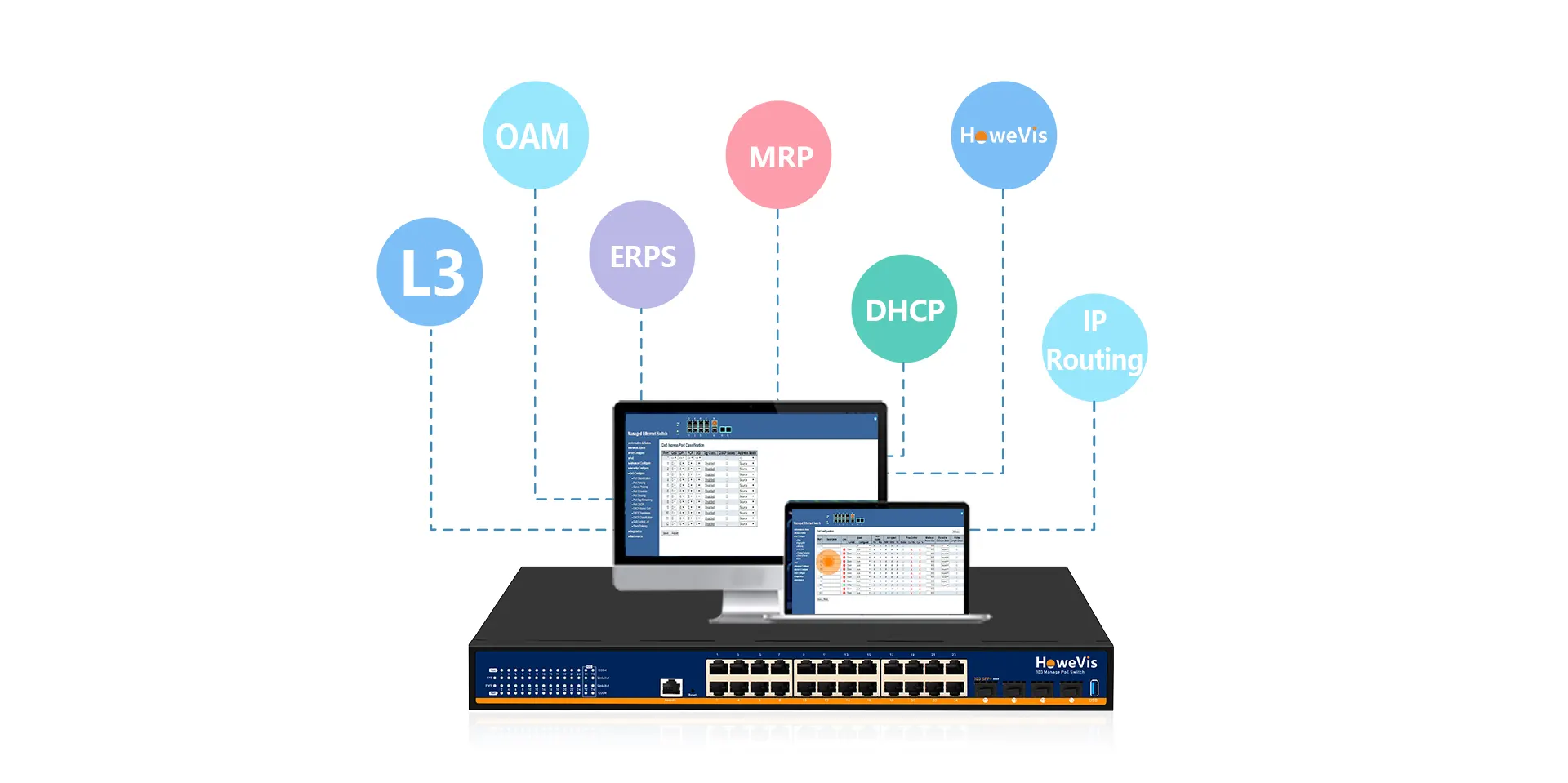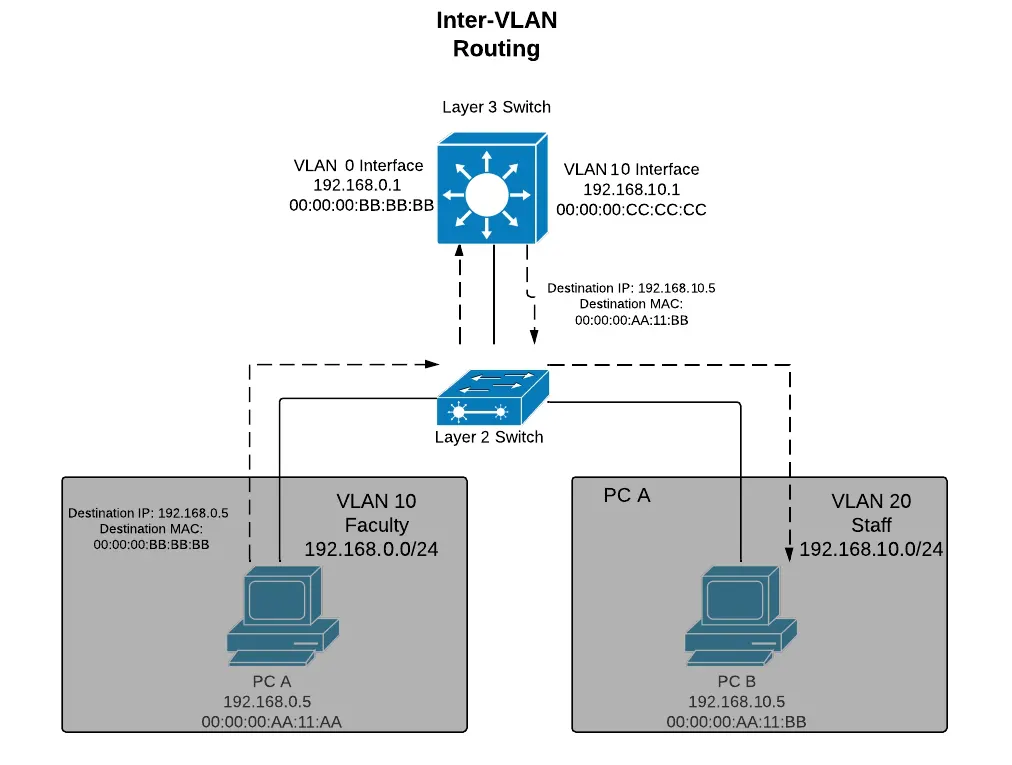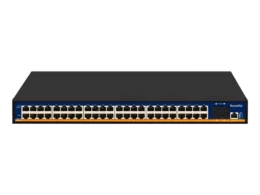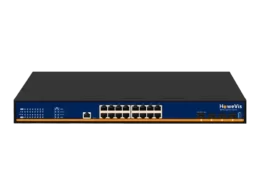Did you know that layer 3 switches are responsible for routing data at blazing speeds in modern networks? These powerful devices play a crucial role in directing traffic efficiently, enhancing network performance significantly. Layer 3 switches operate at the network layer, combining the functions of traditional switches and routers into a single device, making them indispensable in today’s complex networking environments. With their ability to make intelligent routing decisions based on IP addresses, they ensure seamless communication across various network segments. Layer 3 switches are the unsung heroes of network infrastructure, silently managing data flow with precision and speed.
Key Takeaways
Consider Your Network Needs: Evaluate your network requirements to determine if layer 3 switches are necessary based on the size and complexity of your network.
Utilize Layer 3 for Advanced Functionality: Implement layer 3 switches for efficient routing, inter-VLAN communication, and improved network performance.
Balance Pros and Cons: Balance the advantages of layer 3 switches, such as faster routing and scalability with the disadvantages, like cost and complexity to make an informed decision.
Start Small and Scale: Begin with the number of layer 3 switches needed for your current, setup and expand as your network grows to avoid unnecessary expenses.
Enhance VLAN Efficiency: Incorporate layer 3 switches for enhanced VLAN management, security, and traffic control within your network.
Simplify Network Understanding: Understand layer 3 switches as devices that combine the functions of traditional switches with routing capabilities for more efficient data transmission.
Overview of Howevision Layer 3 Switches

The PS52404TFM is a managed PoE fiber switch focusing on 10G uplink capabilities. This switch is a versatile powerhouse, boasting 24 adaptive RJ45 ports supporting speeds of 10/100/1000M and 4 high-speed 1/10G SFP+ fiber ports.
Notably, ports 1-24 adhere to the IEEE802.3af/at PoE standard, delivering a robust single-port PoE power of 30W. As a PoE power supply hub, it autonomously detects and allocates power to compatible equipment through network cables. This includes powering wireless access points, webcams, and VoIP phones, building visual access control intercoms, and catering to high-density PoE demands in various network environments. Ideal for hotels, campuses, factory dormitories, and small to medium-sized enterprises, it offers a tailored solution for diverse networking needs.
The PS52404TFM excels in L3 full network management functionalities. It supports IPV4/IPV6 management, ensures static route total wire-speed forwarding, and incorporates a comprehensive security protection mechanism, complete ACL/QoS policies, and a rich set of VLAN functions.
Enhancing network reliability, it supports multiple redundancy protocols like STP/RSTP/MSTP (<50ms) and (ITU-T G.8032) ERPS, bolstering link backup and ensuring continuous communication even in the event of a one-way network failure. This swift restoration of communication provides uninterrupted application functionality.
Users can configure various application services such as PoE power management, port traffic control, VLAN segmentation, and SNMP through the Web network management mode, aligning the switch precisely with diverse application requirements.
Functionality
Layer 2 switches operate at the data link layer, making forwarding decisions based on MAC addresses. Layer 3 switches, on the other hand, function at the network layer, using IP addresses for routing decisions.
Layer 2 switches are ideal for LAN environments where devices communicate within the same broadcast domain. In contrast, Layer 3 switches are more suitable for larger networks with multiple VLANs and different broadcast domains.
Effectiveness Scenarios
Layer 2 switches are effective in small to medium-sized networks with limited routing needs. They are cost-effective and provide basic connectivity within a single network segment.
In comparison, Layer 3 switches leverage hardware switching to route traffic between different subnets efficiently. They excel in scenarios requiring inter-VLAN routing and support for various routing protocols.
Network Setup Implications
Employing Layer 3 switches in a network setup enhances performance by reducing broadcast traffic and optimizing network resources. By segmenting traffic into separate broadcast domains, these switches improve overall network efficiency.
The deployment of Layer 3 switches enables organizations to implement complex networking configurations while maintaining high-speed data transfer between different segments. This is particularly beneficial in environments with diverse requirements for routing and network segmentation.
The diagram below shows an example of a layer 3 switch routing between VLANs through its two VLAN interfaces. As before, the layer 3 device will still need to resolve the MAC address of PC B through an ARP request broadcasted out to VLAN 20. It then rewrites the appropriate destination MAC address and forwards the packet back out the layer 2 segment:

Advantages of Using Layer 3 Switches
Improved Efficiency
Layer 3 switches, such as those utilized in Ethernet backbone networks, significantly enhance network efficiency. They accomplish this by swiftly routing data packets based on IP addresses, reducing congestion and improving overall network performance.
Layer 3 switches have the capability to support various routing protocols, enabling them to make intelligent decisions about the best paths for data transmission. This dynamic routing capability ensures that data reaches its destination swiftly and efficiently, thereby enhancing the overall speed and reliability of the network.
Enhanced Security
One key advantage of layer 3 switches is their ability to bolster security through VLAN segmentation. By dividing the network into separate virtual LANs, these switches create isolated communication channels. This segmentation helps prevent unauthorized access to sensitive data and reduces the risk of security breaches.
With VLANs, organizations can establish distinct security policies for different segments of their network, ensuring that critical information remains protected. This enhanced security feature makes layer 3 switches an essential component for safeguarding valuable data and maintaining network integrity.
Scalability in Large Networks
Layer 3 switches offer significant scalability advantages, particularly in large networks with a high volume of traffic. As networks expand, these switches can efficiently handle the increased workload by distributing traffic based on IP addresses.
In large-scale environments, layer 3 switches play a crucial role in managing network growth without compromising performance. Their advanced routing capabilities enable seamless communication between devices across expansive networks, ensuring smooth operations and optimal resource utilization.
Do You Need Layer 3 for VLAN?
Network Efficiency
Layer 3 switches play a crucial role in VLAN setups by enhancing network efficiency through optimized traffic routing. These switches operate at the network layer, allowing for faster data transmission and reduced congestion.
Layer 3 switches are necessary for segregating broadcast domains within a VLAN, preventing unnecessary traffic from flooding across the network. By efficiently managing data flow, these switches ensure that each VLAN operates independently, improving overall network performance.
Enhanced Security
In scenarios where security is paramount, layer 3 switches become indispensable for VLAN implementation. These switches offer enhanced security features such as access control lists (ACLs) and routing protocols, ensuring secure communication between different VLANs.
Implementing layer 3 switches in VLAN environments adds an extra layer of security by controlling traffic flow between VLANs based on specific rules. This capability enhances network protection against unauthorized access and potential security breaches.
Dispelling Misconceptions
One common misconception is that layer 2 switches can adequately handle all VLAN requirements without the need for layer 3 functionality. However, while layer 2 switches are suitable for basic VLAN segmentation, they lack the advanced routing capabilities essential for complex network setups.
Another misconception is that layer 3 switches are only beneficial for large-scale networks. In reality, even small to medium-sized networks can benefit significantly from incorporating layer 3 switches, especially when scalability and efficient data transfer are key priorities.
Pros and Cons:
| Pros: | Enhanced network performance | Improved security measures | Efficient traffic management |
| Cons: | Higher cost compared to layer 2 switches | Requires additional configuration and management |






